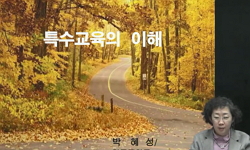Objectives : This study aimed to investigate the prevalence and risk factors of depression within two weeks after stroke. Methods : A total of 362 stroke patients were recruited. Depression (major and minor depressive disorders) was diagnosed by apply...
http://chineseinput.net/에서 pinyin(병음)방식으로 중국어를 변환할 수 있습니다.
변환된 중국어를 복사하여 사용하시면 됩니다.
- 中文 을 입력하시려면 zhongwen을 입력하시고 space를누르시면됩니다.
- 北京 을 입력하시려면 beijing을 입력하시고 space를 누르시면 됩니다.
https://www.riss.kr/link?id=A103916398
- 저자
- 발행기관
- 학술지명
- 권호사항
-
발행연도
2011
-
작성언어
Korean
- 주제어
-
등재정보
KCI등재후보
-
자료형태
학술저널
-
수록면
57-63(7쪽)
-
KCI 피인용횟수
6
- 제공처
-
0
상세조회 -
0
다운로드
부가정보
다국어 초록 (Multilingual Abstract)
Objectives : This study aimed to investigate the prevalence and risk factors of depression within two weeks after stroke. Methods : A total of 362 stroke patients were recruited. Depression (major and minor depressive disorders) was diagnosed by applying DSM-IV criteria. Data on socio-demographic characteristics (age, gender, education, marital state, living state, religion, occupation, income, life event, and social support), stroke severity (NIHSS), disability (BI), stroke hemisphere and location, vascular risk and disease, and previous history of stroke and depression were obtained. Results : Depression was present in 90 (24.9%) patients: major depression 29 (8%) and minor depression 61 (16.9%) patients. In the univariate analyses, depression was associated with older age, higher number of stressful life event, poorer social support, severe disability, anterior stroke location, previous history of stroke and depression. In the multivariate analyses, depression was independently associated with higher number of stressful life events and poorer social support. Conclusion : Depression was common and was determined by premorbid levels of stress and social support in stroke patients at acute stage. More intensive psychiatric care and intervention is needed for the high risk group. (J of Kor Soc for Dep and Bip Disorders 2011;9:57-63)
참고문헌 (Reference)
1 윤성상, "급성기 허혈성 뇌졸중에서 10개 교육병원의 정맥주사 헤파린 이용 실태" 대한신경과학회 23 (23): 446-450, 2005
2 Dam H, "among patients with stroke" 80 : 118-124, 1989
3 Kim JM, "Vascular disease/risk and latelife Depression in a Korean community Population" 185 : 102-107, 2004
4 Yoo SW, "Validity of Korean version of the Mini-International Neuropsychiatric Interview" 2 : 50-55, 2006
5 Parikh RM, "Two year longitudinal study of post-stroke mood disorders: dynamic change in correlates of depression at one and two years" 18 : 579-584, 1987
6 Morris PL, "The relationship between the perception of social support and post-stroke depression in hospitalized patients" 54 : 306-316, 1991
7 Morris PLP, "The relationship between risk-factors for affective-disorder and poststroke depression in hospitalized stroke patients" 26 : 208-217, 1992
8 Sheehan DV, "The mini-international neuropsychiatric interview (M.I.N.I):the development and validation of a structured diagnostic psychiatric interview for DSM-VI and ICD-10" 59 : 22-33, 1988
9 Brugha TS, "The list of threatening experiences: A subset of 12 life events categories with considerable long-term contextual threat" 15 : 323-332, 1985
10 Hermann N, "The Sunnybrook Stroke Study. A prospective study of depressive symptoms and functional outcome" 29 : 618-624, 1998
1 윤성상, "급성기 허혈성 뇌졸중에서 10개 교육병원의 정맥주사 헤파린 이용 실태" 대한신경과학회 23 (23): 446-450, 2005
2 Dam H, "among patients with stroke" 80 : 118-124, 1989
3 Kim JM, "Vascular disease/risk and latelife Depression in a Korean community Population" 185 : 102-107, 2004
4 Yoo SW, "Validity of Korean version of the Mini-International Neuropsychiatric Interview" 2 : 50-55, 2006
5 Parikh RM, "Two year longitudinal study of post-stroke mood disorders: dynamic change in correlates of depression at one and two years" 18 : 579-584, 1987
6 Morris PL, "The relationship between the perception of social support and post-stroke depression in hospitalized patients" 54 : 306-316, 1991
7 Morris PLP, "The relationship between risk-factors for affective-disorder and poststroke depression in hospitalized stroke patients" 26 : 208-217, 1992
8 Sheehan DV, "The mini-international neuropsychiatric interview (M.I.N.I):the development and validation of a structured diagnostic psychiatric interview for DSM-VI and ICD-10" 59 : 22-33, 1988
9 Brugha TS, "The list of threatening experiences: A subset of 12 life events categories with considerable long-term contextual threat" 15 : 323-332, 1985
10 Hermann N, "The Sunnybrook Stroke Study. A prospective study of depressive symptoms and functional outcome" 29 : 618-624, 1998
11 Mackay J, "The Atlas of Heart Disease and Stroke" Geneva, Switzerland, World Health Organization 50-, 2004
12 Prince MJ, "Social support deficits, loneliness and life events as risk factors for depression" 27 : 323-332, 1997
13 Eriksson M, "Sellf reported depression and use of antidepressants after stroke: a national survey" 35 : 936-941, 2004
14 Robinson-Smith G, "Self-care self-efficacy, quality of life, and depression after stroke" 81 : 460-464, 2000
15 Andersen G, "Risk factor for post-stroke depression" 92 : 193-198, 1995
16 Aben I, "Research in the specificity of depression after stroke: a review on an unresolved issue" 25 : 671-689, 2001
17 Kasner SE, "Reliability and validity of estimating the NIH stroke scale score from Medical records" 30 : 1534-1537, 1999
18 Bays C, "Quality of life of stroke survivors: a research synthesis" 33 : 310-316, 2001
19 Carod-Artal J, "Quality of life among stroke survivors evaluated 1 year after stroke: experience of a stroke unit" 31 : 2995-3000, 2000
20 MA Ouimet, "Psychosocial risk factor in Poststroke Depression: a Systematic Review" 46 : 819-828, 2001
21 Spalletta G, "Predictors of cognitive level and depression severity are different in patients with left and right hemispheric stroke within the first year of illness" 249 : 1541-1551, 2002
22 Hosking SG, "Poststroke depression: prevalence, course, and associated factors" 6 : 107-133, 1996
23 Berg A, "Poststroke depression in acute phase after stroke" 12 : 14-20, 2001
24 Tang WK, "Poststroke depression in Chinese patients: frequency, psychosocial, clinical and radiological determinants" 18 : 45-51, 2005
25 Kauhanen M-L, "Poststroke depression correlates with cognitive impairment and neurological deficits" 30 : 1875-1880, 1999
26 Kim JS, "Poststroke depression and emotional incontinence: Correlation with lesion location" 54 : 1805-1810, 2000
27 Astrom M, "Major depression in stroke patients: a 3-year: longitudinal study" 24 : 976-982, 1993
28 Kim JM, "Lifetime urban/rural residence, social support and late life depression in Korea" 19 : 843-851, 2004
29 Cho MJ, "Lifetime and 12month prevalence of DSM-IV psychiatric disorder among Korean adults" 195 : 203-210, 2007
30 Morris PL, "Lesion location and poststroke depression" 8 : 339-403, 1996
31 Desmond DW, "Ischemic stroke and depression" 9 : 429-439, 2003
32 Kim JM, "Interaction between life stressors and susceptibility genes (5HTTLPR and BDNF) on depression in Korean elders" 62 : 423-428, 2007
33 Roger VL, "Heart disease and Stroke Statistics" American Heart Association 123 : e18-e209, 2011
34 Mahoney FI, "Functional evaluation: the Barthel index" 14 : 61-65, 1965
35 Hackett ML, "Frequency of depression after stroke: A systematic review of observational studies" 36 : 1330-1340, 2005
36 Pohjasvaara T, "Frequency and clinical determinants of poststroke depression" 29 : 2311-2317, 1998
37 Gillen R, "Depressive symptoms and history of depression predict rehabilitation efficiency in stroke patients" 82 : 1645-1649, 2001
38 Verdelho A, "Depressive symptoms after stroke and relationship with dementia" 62 : 905-911, 2004
39 Sharpe M, "Depressive disorders in long-term survivors of stroke. Association with demographic and social factors, functional status, and brain lesion volume" 164 : 380-386, 1994
40 Pohjasvaara T, "Depression is an independent predictor of poor long-term functional outcome poststroke" 8 : 315-319, 2001
41 Williams LS, "Depression and other mental health diagnoses increase mortality risk after ischemic stroke" 161 : 1090-1095, 2004
42 MacHale SM, "Depression and its relation to lesion location after stroke" 64 : 371-374, 1998
43 Berg A, "Depression and its assessment among stroke patients and their caregivers" Helsinki univ 2009
44 Kotila M, "Depression after stroke: result of the FINNSTROKE study" 29 : 368-372, 1998
45 Carson AJ, "Depression after stroke and lesion location: a systematic review" 356 : 122-126, 2000
46 Provinciali L, "Depression after first-ever ischemic stroke: the prognostic role of neuroanatomic subtype in clinical practice" 26 : 592-599, 2008
47 Statistics Korea, "Death statistics"
48 Paolucci S, "DESTRO study group. The Italian multicenter observational study on poststroke depression (DESTRO)" 253 : 556-562, 2006
49 Aben I, "Comparative study into the one year nummulative incidence of depression after stroke and myocardial infarction" 23 : 658-664, 2003
50 Morris PL, "Association of depression with 10-year poststroke mortality" 150 : 124-129, 1993
51 Olsen TS, "Arm and leg paresis as outcome predictors in stroke rehabilitation" 21 : 247-251, 1990
52 Kang YW, "A validity study on the Korean minimental state examination (K-MMSE) in dementia patients" 15 : 300-308, 1997
53 Robinson RG, "A two-year longitudinal study of post-stroke mood disorders: prevalence and duration at six month follow up" 144 : 256-262, 1984
54 Robinson RG, "A two-year longitudinal study of post-stroke mood disorders: findings during the initial evaluation" 14 : 736-741, 1983
55 Robinson RG, "A two-year longitudinal study of post-stroke mood disorders: diagnosis and outcome at one and two years" 18 : 387-843, 1987
동일학술지(권/호) 다른 논문
-
우울장애에서 지각된 스트레스 정도가 희망감에 미치는 영향 : 인지적 정서조절 전략 차이
- 대한우울조울병학회
- 이나빈
- 2011
- KCI등재후보
-
한국형 양극성 장애 약물치료 알고리듬 2010 : 특수 상황에서의 치료
- 대한우울조울병학회
- 김병수
- 2011
- KCI등재후보
-
한국형 양극성 장애 약물치료 알고리듬 2010 : 조증 삽화
- 대한우울조울병학회
- 김원
- 2011
- KCI등재후보
-
양극성 장애 환자와 이환되지 않은 형제자매에서 나타나는 계절성과 수면-각성 일주기 특성
- 대한우울조울병학회
- 김지선
- 2011
- KCI등재후보
분석정보
인용정보 인용지수 설명보기
학술지 이력
| 연월일 | 이력구분 | 이력상세 | 등재구분 |
|---|---|---|---|
| 2024 | 평가예정 | 재인증평가 신청대상 (재인증) | |
| 2021-07-16 | 학술지명변경 | 한글명 : 우울조울병 -> Mood and Emotion |  |
| 2021-07-14 | 학회명변경 | 한글명 : 대한우울∙조울병학회 -> 대한우울조울병학회 |  |
| 2021-01-01 | 평가 | 등재학술지 선정 (계속평가) |  |
| 2020-12-01 | 평가 | 등재후보로 하락 (재인증) |  |
| 2017-01-01 | 평가 | 등재학술지 선정 (계속평가) |  |
| 2016-01-01 | 평가 | 등재후보학술지 유지 (계속평가) |  |
| 2015-04-02 | 학회명변경 | 영문명 : Korean Society for Depressive and Bipolar Disorders -> Korean Society for Affective Disorders |  |
| 2015-04-01 | 학술지명변경 | 외국어명 : Journal of Korean Society for Depressive and Bipolar Disorders -> Mood and Emotion |  |
| 2015-01-01 | 평가 | 등재후보학술지 유지 (계속평가) |  |
| 2013-01-01 | 평가 | 등재후보 1차 FAIL (등재후보1차) |  |
| 2012-01-01 | 평가 | 등재후보학술지 유지 (기타) |  |
| 2011-01-01 | 평가 | 등재후보 1차 PASS (등재후보1차) |  |
| 2009-01-01 | 평가 | 등재후보학술지 선정 (신규평가) |  |
학술지 인용정보
| 기준연도 | WOS-KCI 통합IF(2년) | KCIF(2년) | KCIF(3년) |
|---|---|---|---|
| 2016 | 0.11 | 0.11 | 0.11 |
| KCIF(4년) | KCIF(5년) | 중심성지수(3년) | 즉시성지수 |
| 0.12 | 0.1 | 0.368 | 0.05 |





 KCI
KCI




